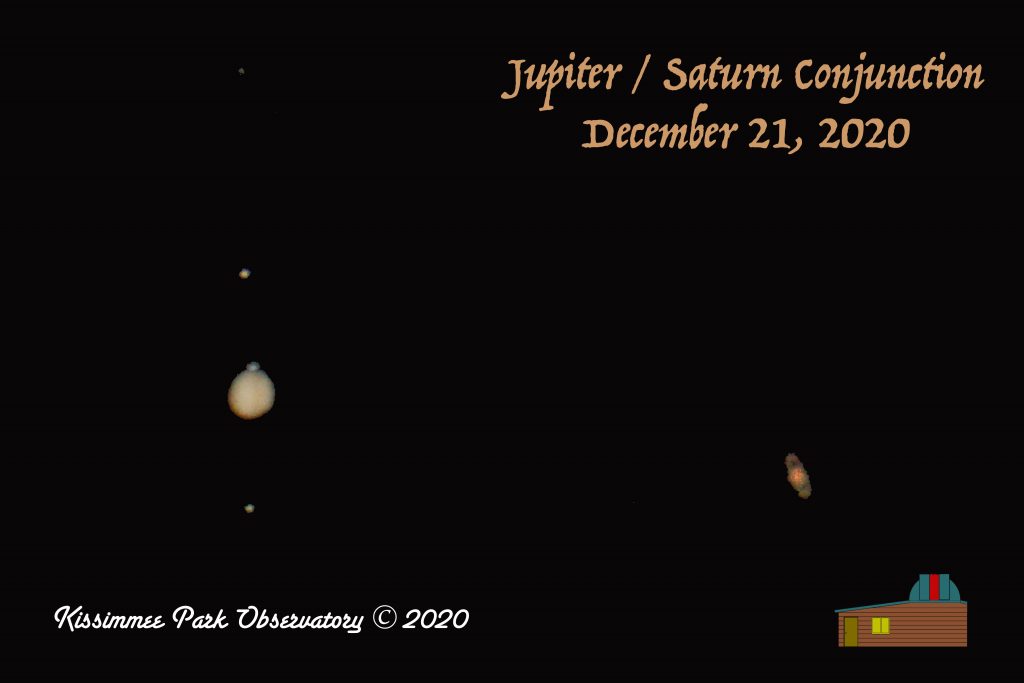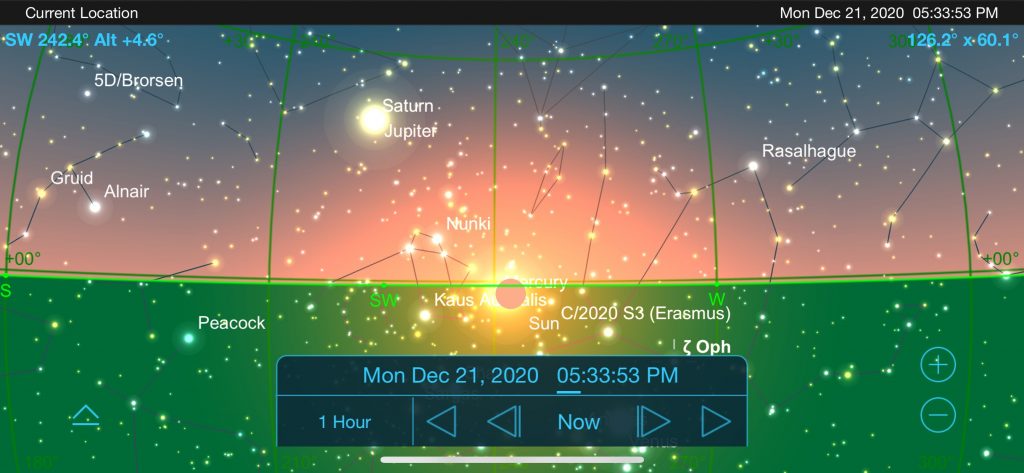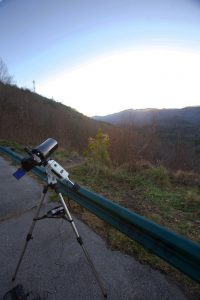The great astronomical event to close out the less-than-stellar year of 2020, was the exceptionally close pass of the two largest planets in the solar system; Jupiter & Saturn.
The closest alignment appeared just a tenth of a degree apart and lasted for a few days in the southwestern sky. On the evening of December 21st, they appeared so close that a pinkie finger at arm’s length easily covered both planets in the sky. The planets were easy to see with the unaided eye by looking toward the southwest just after sunset.
For the week before Christmas I was in the western North Carolina area, so I had to locate a good observing site, that did not have obscuring mountains to the southwest. We knew of Boyd’s Gap overlook, on SR 64 near the Ocoee River. This location has a large parking lot, and an excellent view of the mountains, from the South to North on the western side.
I stopped by Boyd’s Gap on Sunday (12/20) to check out the viewing possibilities. Although it was cloudy, I used Sky Safari on my iPhone to determine where the planets would be the next night, and it was pretty apparent that the site would work!
My father in law and I arrived the next afternoon by about 4:30. The site was closer to our mountain cabin that we thought, so we had to wait a while before nightfall.
The previous night when we verified the site, it was very calm. This night, the night of the closest pass, was much windier. I set up my travel astrophotography system, except this time I was using the Meade ETX-125 Maksutov OTA on the iOptron SmartEQ mount.
My big problem (at least this time) with this setup is that I can’t point it before dark. There is a laser mounted on the OTA, which does a great job after dark. But since the sun was still up, it wasn’t helping at all!
The mount itself is “goto” but I did not have Polaris to align with so it was not finding things well, even the moon! So I had to wait until twilight, when the double planet actually appeared to the naked eye. Even then I had difficulty finding it.
As time passed, more and more people showed up at the site. It seemed they were all coming to see the conjunction!
Finally I did locate the twin planet grouping in the ETX. The wind continued to gust occasionally and was causing some significant bouncing of the 3000+mm focal length optical system. To be honest the larger ETX optical tube might be a little bit of a challenge for the little iOptron mount. In calm conditions it is pretty solid.
Because I could not see Polaris early on, I couldn’t critically polar align the mount, so there was a good bit of declination drift, which you can see in the video below.
Image Info
This is a composite of Jupiter’s moons, with the planets themselves. Also brightened up the image of Saturn. Not really satisfied with this result but at least I captured this once in a lifetime event!
I was able to use several frames in the process to create the image above:
- A 6/10s exposure to show the moons of Jupiter
- A 1/125s exposure to get both planets on the same frame
- Frames were combined and layered in PhotoShop



